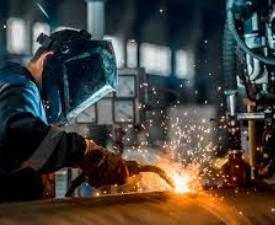Description
Course Duration:
-
Total Hours: 300–400 hours (typically 3–6 months, depending on the institution)
-
Delivery Mode: Full-time/Part-time/Evening classes
-
Practical Training: Hands-on welding practice in workshops
Course Objectives:
By the end of the program, students will:
-
Understand welding principles, tools, and materials.
-
Gain proficiency in different welding techniques (SMAW, GMAW, GTAW, etc.).
-
Learn to read and interpret welding blueprints and symbols.
-
Follow occupational health and safety (OHS) guidelines.
-
Perform quality control and inspection of welds.
-
Operate welding equipment and troubleshoot common issues.
Course Modules:
-
Introduction to Welding Technology
-
History and types of welding
-
Welding careers and industry trends
-
-
Welding Processes & Techniques
-
Shielded Metal Arc Welding (SMAW)
-
Gas Metal Arc Welding (GMAW/MIG)
-
Gas Tungsten Arc Welding (GTAW/TIG)
-
Flux-Cored Arc Welding (FCAW)
-
Oxy-Fuel Welding & Cutting
-
-
Welding Safety & PPE
-
Hazard identification and prevention
-
Proper use of personal protective equipment (PPE)
-
-
Blueprint Reading & Welding Symbols
-
Technical drawings and measurements
-
AWS (American Welding Society) symbols
-
-
Metallurgy & Materials Science
-
Properties of metals (steel, aluminum, etc.)
-
Heat treatment and distortion control
-
-
Practical Welding Labs
-
Hands-on practice with different welding methods
-
Joint preparation and welding positions (flat, horizontal, vertical, overhead)
-
-
Inspection & Quality Control
-
Visual inspection and defect identification
-
Non-destructive testing (NDT) basics
-
-
Workshop Practices & Equipment Maintenance
-
Handling and maintaining welding machines
-
Troubleshooting common welding problems
-
Certification & Assessment:
-
Internal Exams: Theory tests and practical assessments
-
Final Project: A welding project demonstrating skills
-
Certification Awarded:
-
Certificate in Welding Technician (Issued by the training institute)
-
Optional: Preparation for AWS (American Welding Society) certification
-
Career Opportunities:
Graduates can work as:
-
Welding Technician
-
Fabrication Welder
-
Pipe Welder
-
Structural Steel Welder
-
Maintenance Welder
-
Welding Inspector (with further training)
Entry Requirements:
-
Education: High school diploma or equivalent (minimum 10th grade)
-
Age: Typically 18+ years
-
Physical Fitness: Ability to handle manual labor and work in different environments
Tools & Equipment Used:
-
Welding machines (MIG, TIG, Stick)
-
Cutting torches & plasma cutters
-
Grinders, clamps, and measuring tools
-
Safety gear (helmets, gloves, aprons)
Why Choose This Course?
✅ High demand for skilled welders in industries
✅ Hands-on training with industry-standard equipment
✅ Short duration with quick entry into the workforce
✅ Pathway to advanced certifications (e.g., AWS, CWB)




